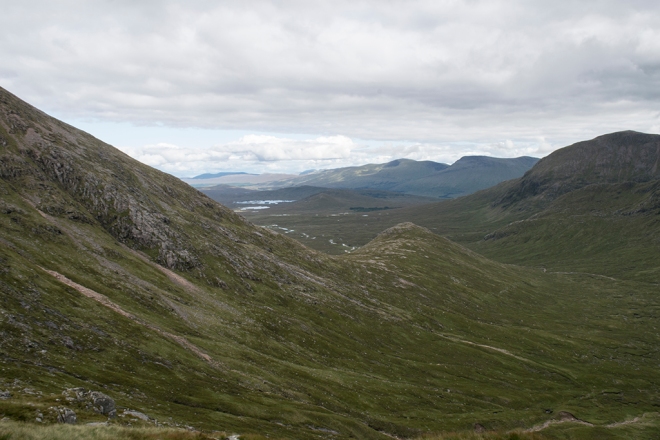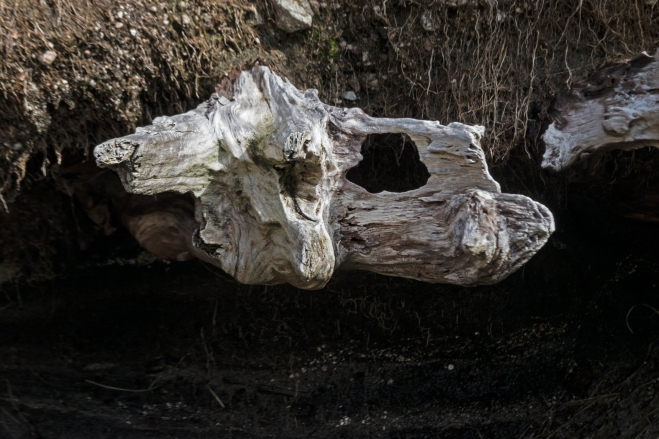The Campbells of Glenorchy, like most great lairds in the Highlands, maintained deer forests for their ‘sport’. They were Royal foresters of Mamlorn, a large deer reserve on the mountains between Glen Lochay and Glenlyon in Breadalbane, where they acted, in theory at least, as stewards on behalf of the King. They also maintained a forest at Beinn Dorain, subject of the epic song, Moladh Beinn Dobhrain (In Praise of Beinn Dorain), by the earl of Breadalbane’s game herd, Duncan Ban MacIntyre (Donnchadh Bàn Mac an t-Saoir, 1724-1812). The Glenorchy lairds also maintained a forest at ‘Corrichiba’ (Coireach a’ Bà) in the area now occupied by the Blackmount deer forest. Unlike Mamlorn, Beinn Dorain and Coireach a’ Bà were private forests, in which the deer were preserved for the laird himself.

The forest at Coireach a’ Bà occupied a large corrie on the eastern slopes of the Black Mount range (Am Monadh Dubh) that includes the peaks of Stob a’ Choire Odhair, Stob Ghabhar and Creise/Clach Leathad. It is typical of the landscape features used as deer reserves: a large, relatively fertile and steep-sided corrie. Such locations were reserved as a place of safety for a deer herd, especially for hinds and calves. It opens to the west on to Rannoch Moor, passing the mound of Meall Tionall . To the north, east and south it is bounded by steep slopes, on the south side mainly cliffs. The lowest passage over the massif is at Bealach Fuar-Chathaidh (pass of the cold drifts) at almost 700m above sea level. It is an ideal place to corral deer ahead of a deer drive, the favoured method of hunting when mass, conspicuous display was required. The presence of an elevation named Meall Tionall (mound of assembly) concretely associates the location with deer hunting. This relatively common Gaelic place name indicates a location where deer were gathered for a drive.

Place names around the area give further indications of previous land use and vegetation cover. Bealach Fuar-Chathaidh can be approached from Glen Etive via a long path up the steep sided Coire Ghuibhasan. The name means corrie of the pines, but there are few in evidence today. However, all across the lower elevations of the corrie, eroded peat reveals bog pine: remnants of pine trees now overtaken by the peat. A systematic dating process has not been undertaken, but the reference to their presence in Gaelic suggests that trees were present in the early medieval period and its persistence points to a relatively recent demise of the trees.

It is possibly via this route that raiders came to Coireach a’ Bà in 1612 and 1613. A note from Glenorchy in 1613 documented four raids over the summers of 1612 and 1613, three undertaken by servants of Allan Cameron of Lochiel and the fourth directed by Ranald McRanald of Gargavich, who stayed in Dalness while his men took seventeen deer from the forest, and ‘ane quhyte hind'[1].

A few years later in 1621 the Earl of Mar witnessed a white hind while on a hunt with Glenorchy. Perhaps there was a genetic predisposition within the herd: two white hinds within less than a decade. The Earl reported this curiosity to King James VI, a move he and Glenorchy were to regret. The King dispatched his English forester to capture the deer, disastrously underestimating the challenge of cornering and trapping alive a red deer in a highland setting. To add to the challenge, they attempted to do so in February. After much ado and great inconvenience to Lord Glenorchy, who was expected to entertain and facilitate the expedition, Scandaver, the forester, was forced to abandon his efforts when his party failed to navigate Rannoch Moor in winter conditions [2].
This post is the second of a series on Glenorchy’s deer reserves . The first is In the footsteps of Duncan Ban: deer, hunting and song in the Southern Highlands.
- National Records of Scotland, Breadlabane Muniments, GD112/39/23/9 and GD112/17/1/2
- Fergusson, J, The White Hind and other discoveries (Faber and Faber, London, 1963)

One thought on “‘Ane Quhyte Hynd’: Coireach a’ Bà”